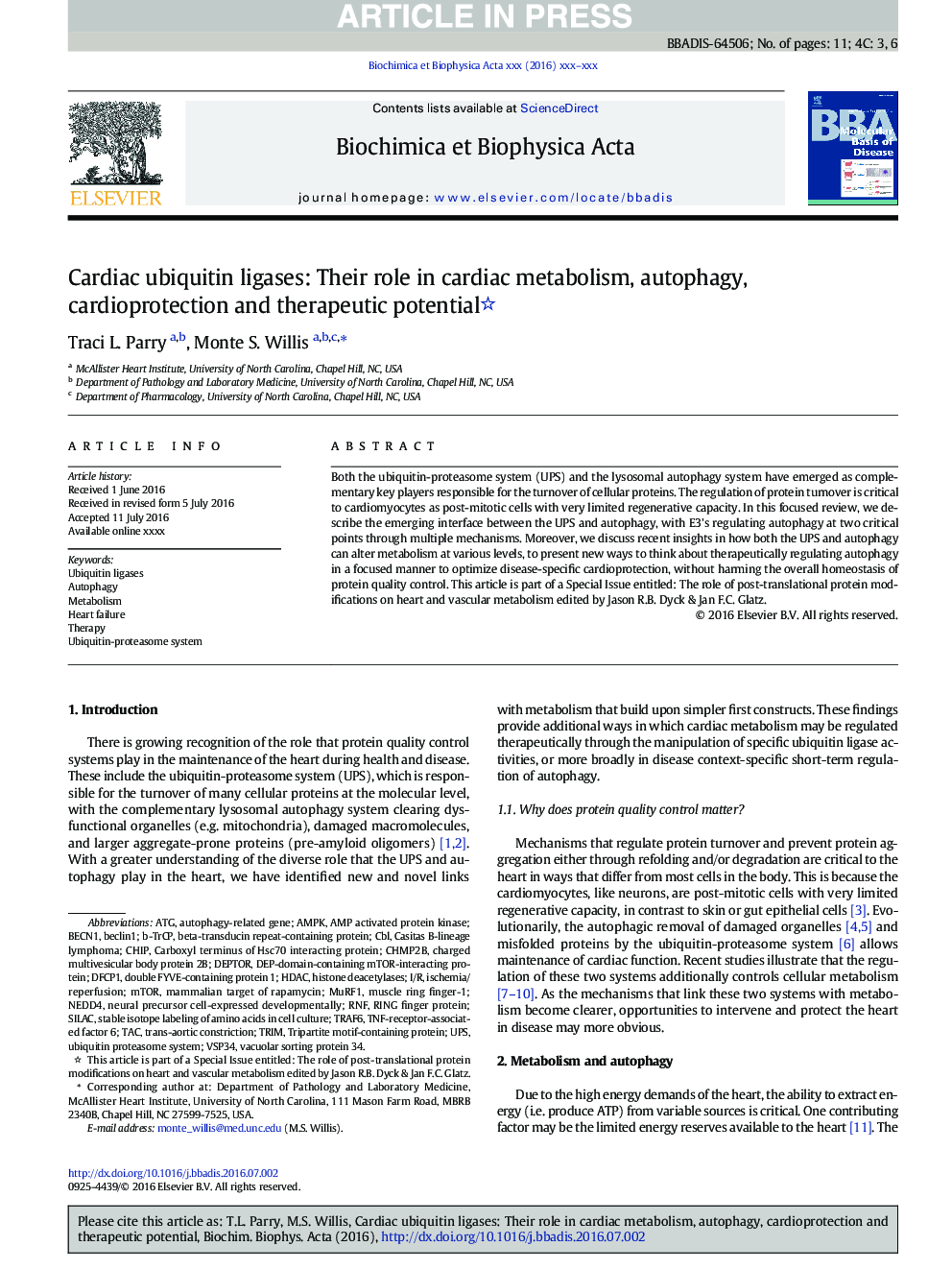| Article ID | Journal | Published Year | Pages | File Type |
|---|---|---|---|---|
| 5501205 | Biochimica et Biophysica Acta (BBA) - Molecular Basis of Disease | 2016 | 11 Pages |
Abstract
Both the ubiquitin-proteasome system (UPS) and the lysosomal autophagy system have emerged as complementary key players responsible for the turnover of cellular proteins. The regulation of protein turnover is critical to cardiomyocytes as post-mitotic cells with very limited regenerative capacity. In this focused review, we describe the emerging interface between the UPS and autophagy, with E3's regulating autophagy at two critical points through multiple mechanisms. Moreover, we discuss recent insights in how both the UPS and autophagy can alter metabolism at various levels, to present new ways to think about therapeutically regulating autophagy in a focused manner to optimize disease-specific cardioprotection, without harming the overall homeostasis of protein quality control. This article is part of a Special Issue entitled: The role of post-translational protein modifications on heart and vascular metabolism edited by Jason R.B. Dyck & Jan F.C. Glatz.
Keywords
TACNedd4Beclin1TRAF6BECN1Muscle RING finger-1ATGTRIMHDACCHMP2BmTORDfcp1double FYVE-containing protein 1RnfAMPKMuRF1AMP activated protein kinaseI/RAutophagyischemia/reperfusionstable isotope labeling of amino acids in cell cultureTherapyUbiquitin-proteasome systemUbiquitin proteasome systemSILACCasitas B-lineage lymphomaubiquitin ligasesMetabolismheart failuremammalian target of rapamycinhistone deacetylasesRING finger proteinCHiPautophagy-related geneCblDEPTORUPS
Related Topics
Life Sciences
Biochemistry, Genetics and Molecular Biology
Ageing
Authors
Traci L. Parry, Monte S. Willis,
